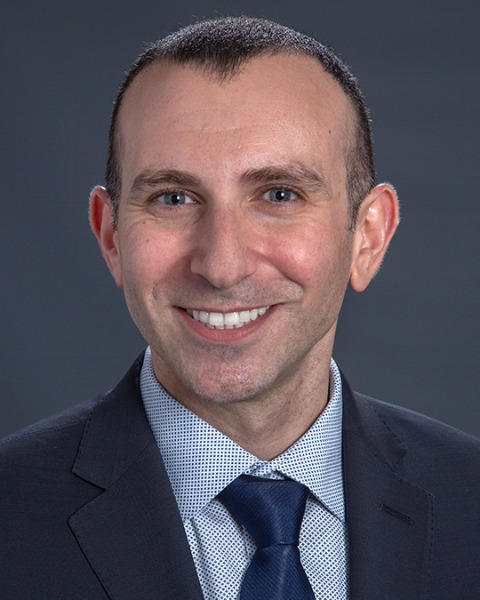SIR 2025
Embolization
Scientific Session
A dual-center, retrospective comparison of right portal vein embolization using foamed sodium tetradecyl sulfate compared with microsphere particle embolization
- NF
Nathan Franssen, MD
Resident
University of Vermont Medical Center, United States 
Peter J. Park, MD
Assistant Professor
Emory University, United States- JB
Jacob Bleau, BS
Medical Student
University of Vermont, United States - CM
Christopher Morris, Division of Interventional Radiology, University of Vermont Medical Center
Professor of Radiology and Surgery at the Larner College of Medicine at the University of Vermont
Division of Interventional Radiology, University of Vermont Medical Center, United States - AB
Anant Bhave, MD
Associate Professor
University of Vermont Medical Center, United States - GS
Geoffrey Scriver, M.D.
Physician-Scientist
University of Vermont Medical Center, United States - JS
Joseph Shields, MD
Associate Professor
University of Vermont Medical Center, United States - JP
Jaime Pindea, MD
Assistant Professor
University of Vermont Medical Center, United States - CO
Conor O'Neill, MD
Assistant Professor
University of Vermont Medical Center, United States - SM
Shishir Maithel, MD
Professor
Division of Surgical Oncology, Department of Surgery, Emory University School of Medicine, United States - JS
Juan Sarmiento, MD, FACS
Professor
Division of General and GI Surgery, Department of Surgery, Emory University School of Medicine, United States - DK
David Kooby, MD
Professor
Division of Surgical Oncology, Department of Surgery, Emory University School of Medicine, United States - ML
Meghan Lilly, MD
Assistant Professor
Emory University School of Medicine, United States - JJ
Jai Jung, MD
Resident
Emory University, United States 
Bill Majdalany, MD, FSIR (he/him/his)
Associate Professor
University of Vermont Medical Center, United States
Presenting Author(s)
Author/Co-author(s)
Portal vein embolization (PVE) induces hypertrophy of the future liver remnant (FLR) prior to interval partial hepatectomy. A variety of PVE techniques and outcomes have been reported with varying outcomes. Foaming 3% sodium tetradecyl sulfate (STS) and ethiodized oil with balloon occlusion of the proximal right portal vein allows for isolated embolization of the distal right portal branches. Microsphere particle embolization (MSP) uses portal flow to deliver particles, in escalating sizes, to portal venules and is combined with coils or plugs. A comparison of right PVE outcomes using STS versus MSP was performed.
Materials and Methods:
An IRB approved, retrospective review of patients who underwent right PVE for hepatic malignancy between January 2008 and July 2024 was performed at two medical centers. Demographics, clinical data, technical success, clinical success, and causes of clinical failure (CF) were compared between PVE with STS vs. MSP. Technical success was defined as complete right PVE with patency of the left and main portal veins in a single procedure. Clinical success was defined as successful partial hepatectomy. Statistical analysis was performed with chi-square test.
Results:
87 patients (47 male, 40 female) with a mean age of 58.3 (SD 11) were identified. No significant differences in age, sex, underlying liver disease, or proportion who underwent prior chemotherapy or liver-directed therapy (LDT) were present between cohorts. 28 had primary hepatic malignancy (12 hepatocellular carcinoma, 16 cholangiocarcinoma) and 59 had secondary hepatic malignancies (54 colorectal carcinoma and 5 others with a single occurrence). Technical success of STS PVE was 100% (42/42) compared to 98% (44/45) for MSP (P=0.88). The single failure had portal vein thrombosis (PVT). Clinical success was 36/42 (86%) for STS compared to 33/45 (73%) for MSP (P=0.044). The 6 STS CF were due to disease progression (4, 10%), inadequate FLR hypertrophy (IFLRH) (1, 2%), and intraoperative issues (1, 2%). The 12 MSP CF were due to IFLRH (7, 16%) disease progression (4, 9%), and PVT (1, 2%). IFLRH occurred in 8/87 (9.1%) overall, 1/8 (12.5%) from STS and 7/8 (87.5%) from MSP cohorts (P< 0.000001) CF in STS was due to IFLRH 1/6 (17%) compared to MSP 7/12 (58%) (P=0.012). CF from disease progression was not statistically significant between cohorts (4/42 in STS and 4/45 in MSP, P=0.39).
Conclusion:
STS PVE is associated with a lower rate of IFLRH and a higher rate of partial hepatectomy than MSP PVE.


.jpg)